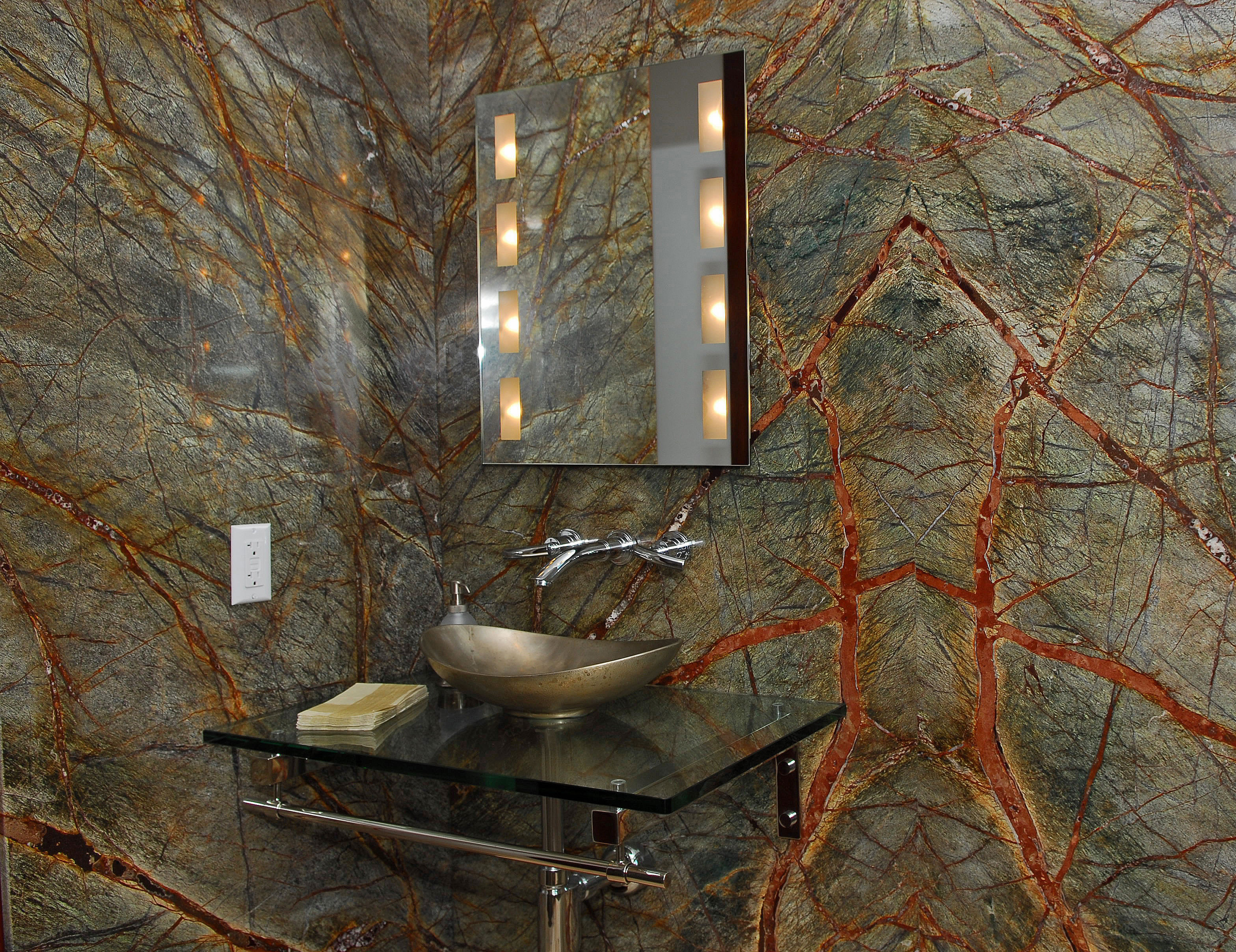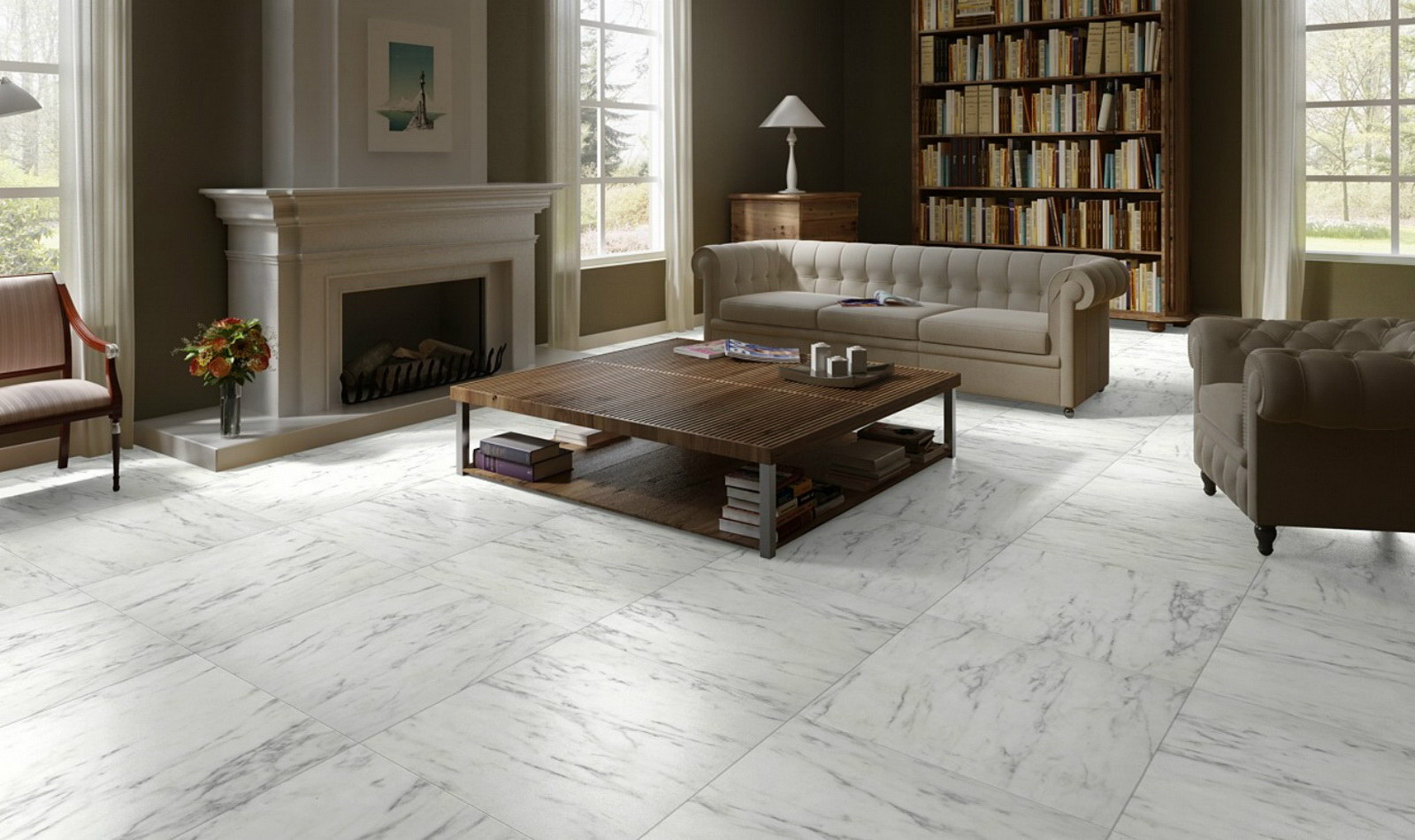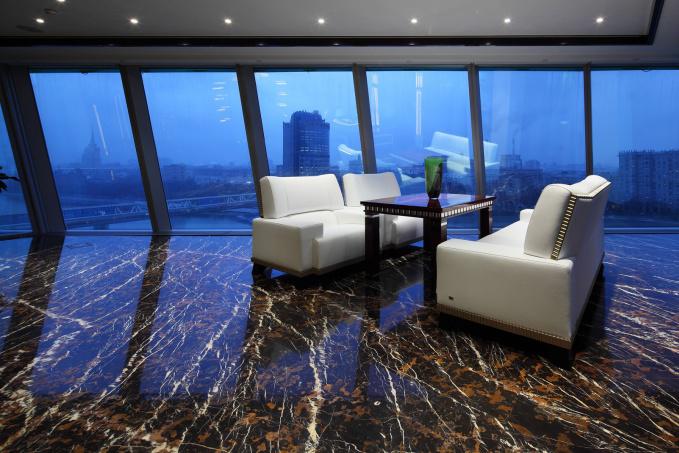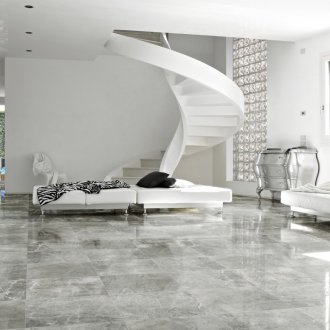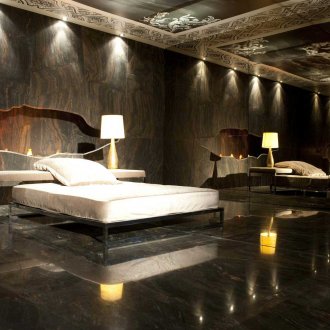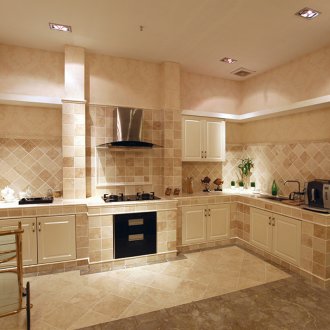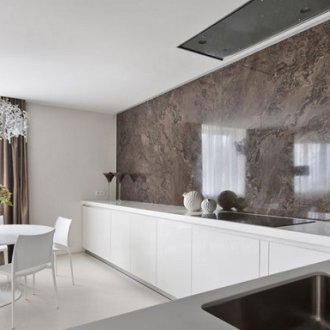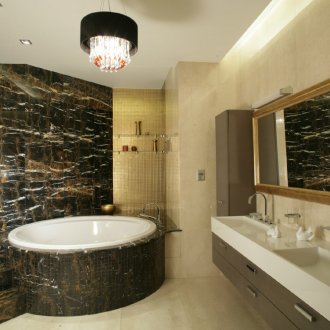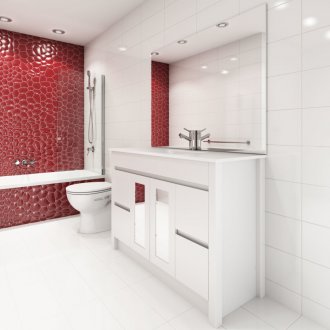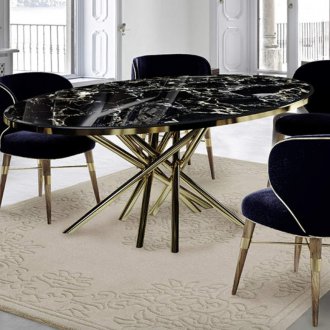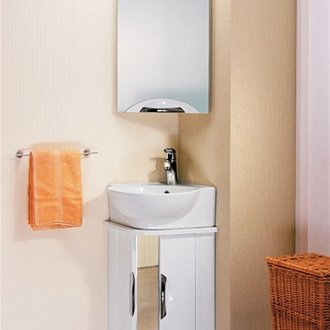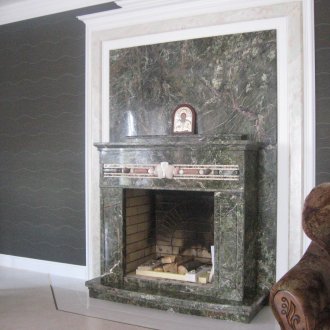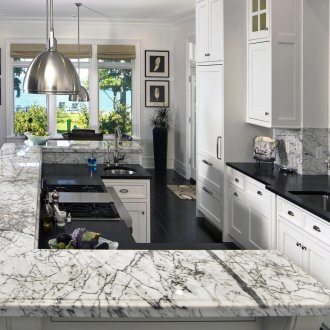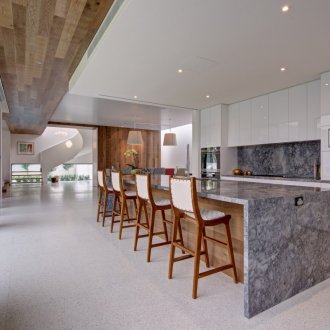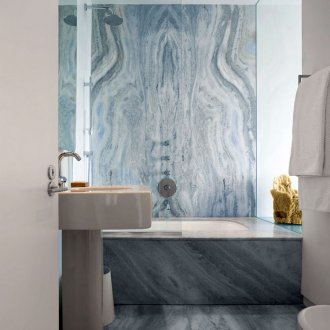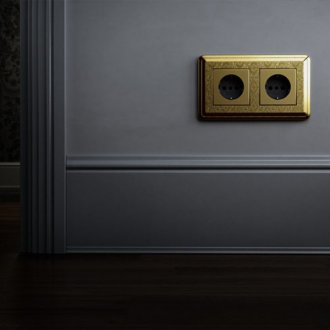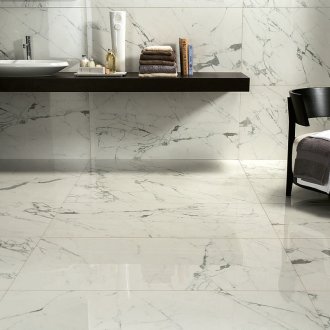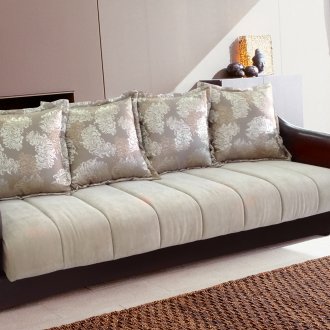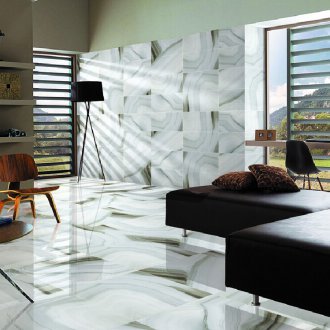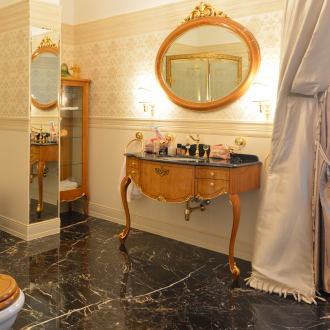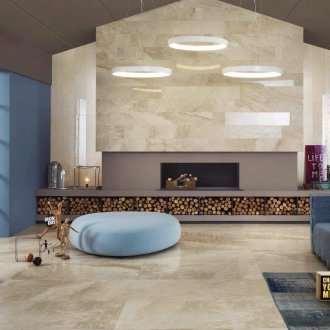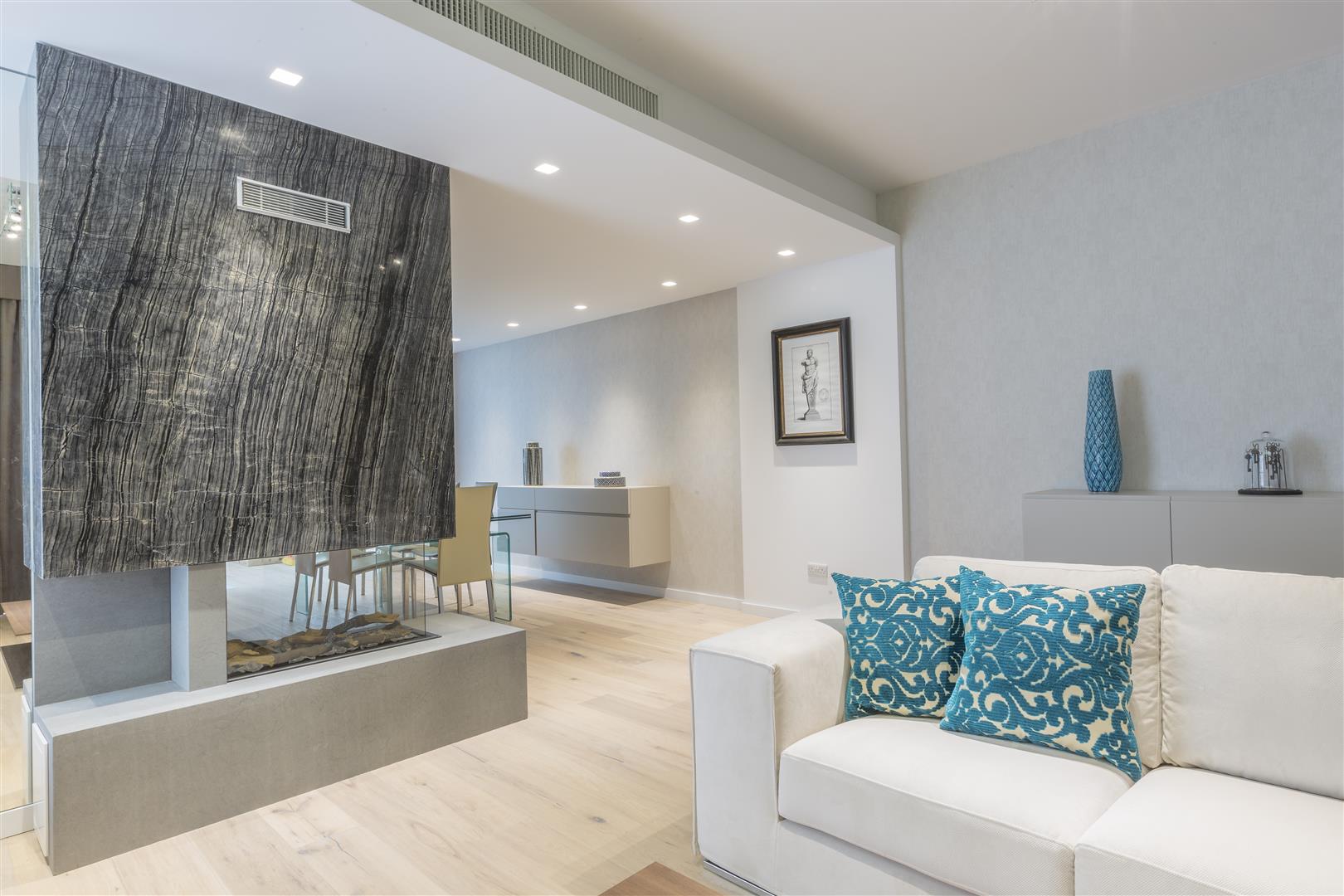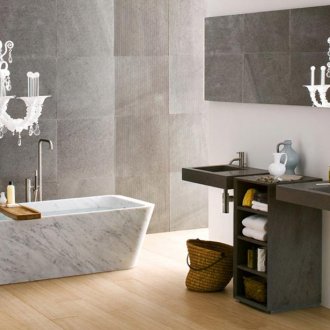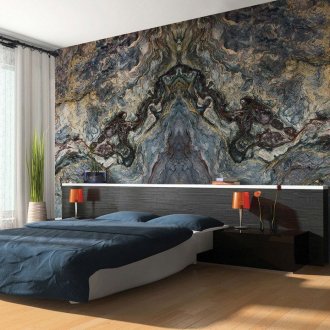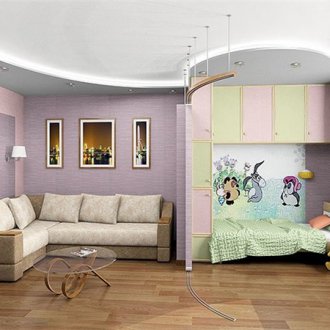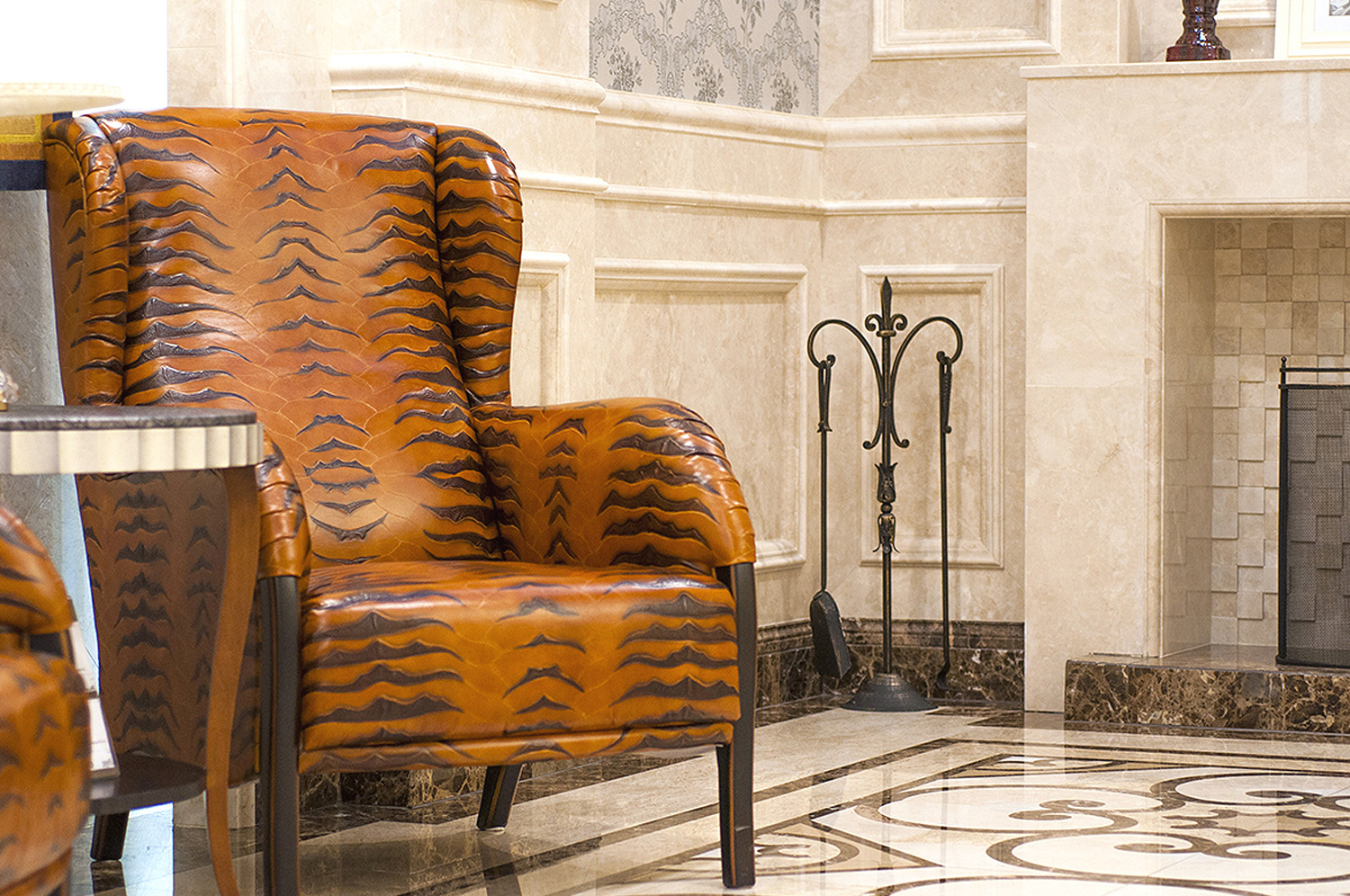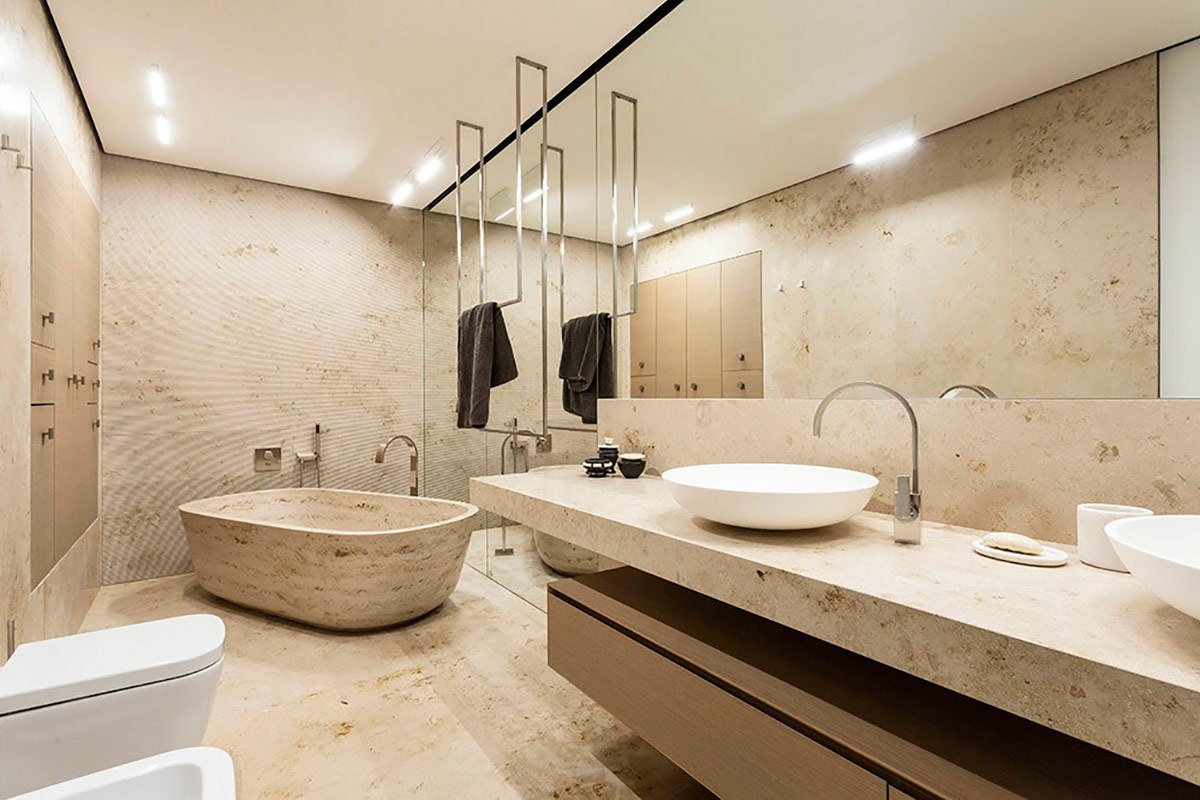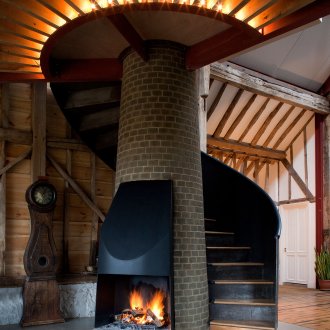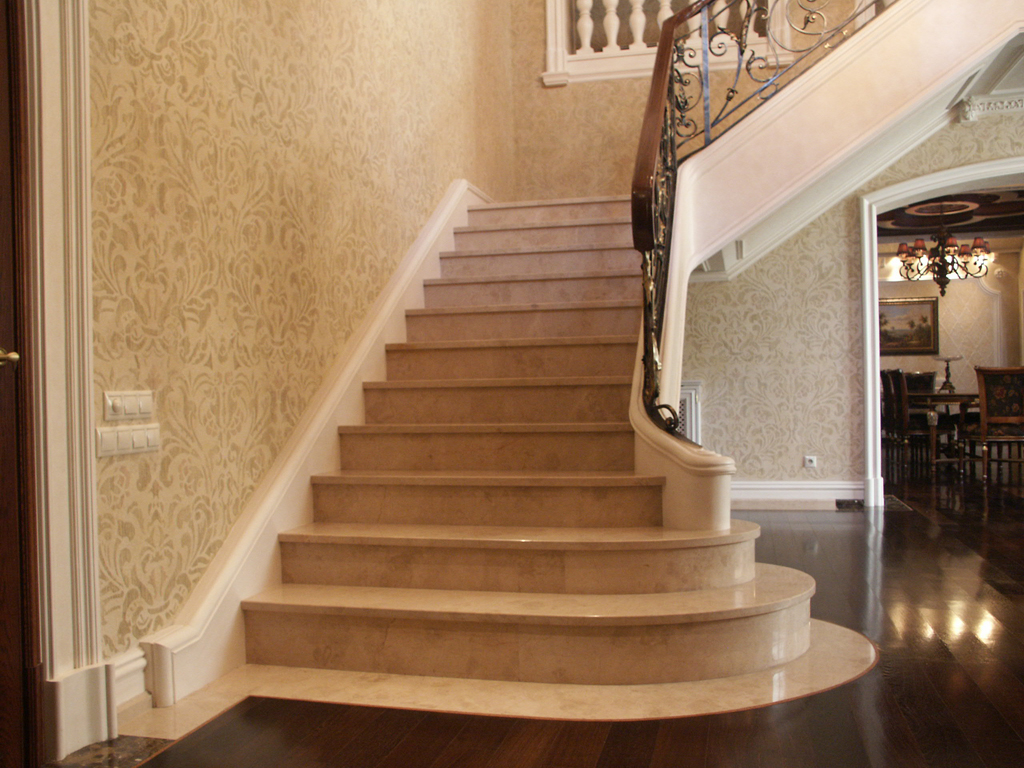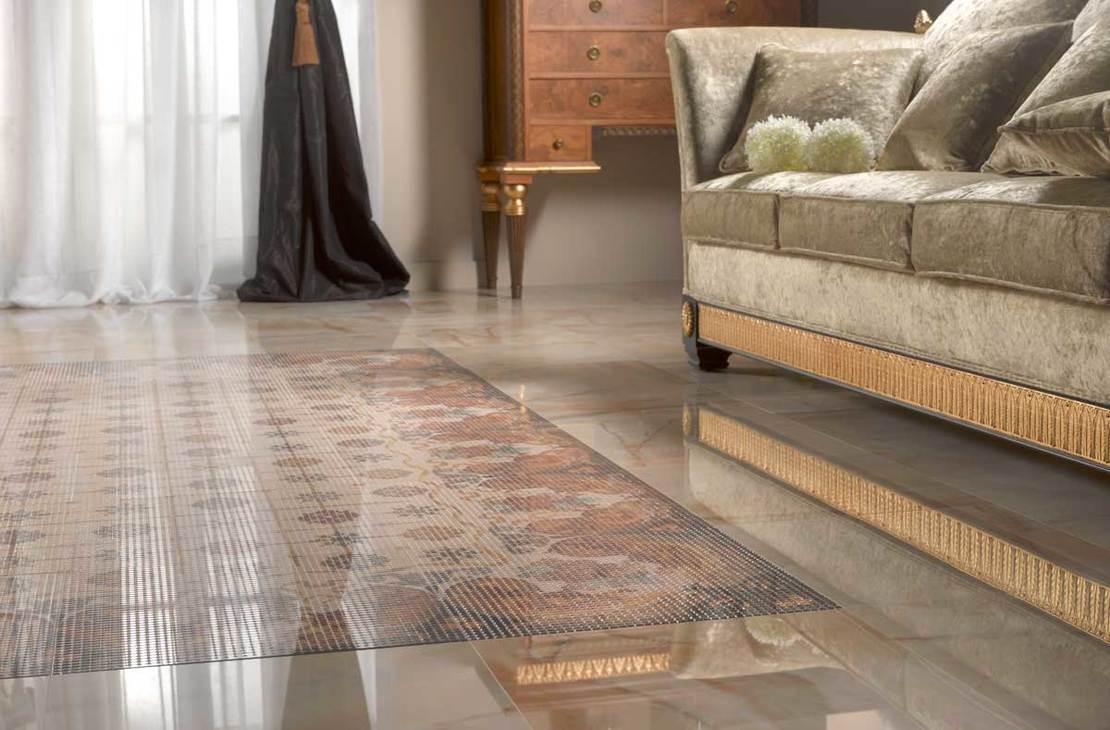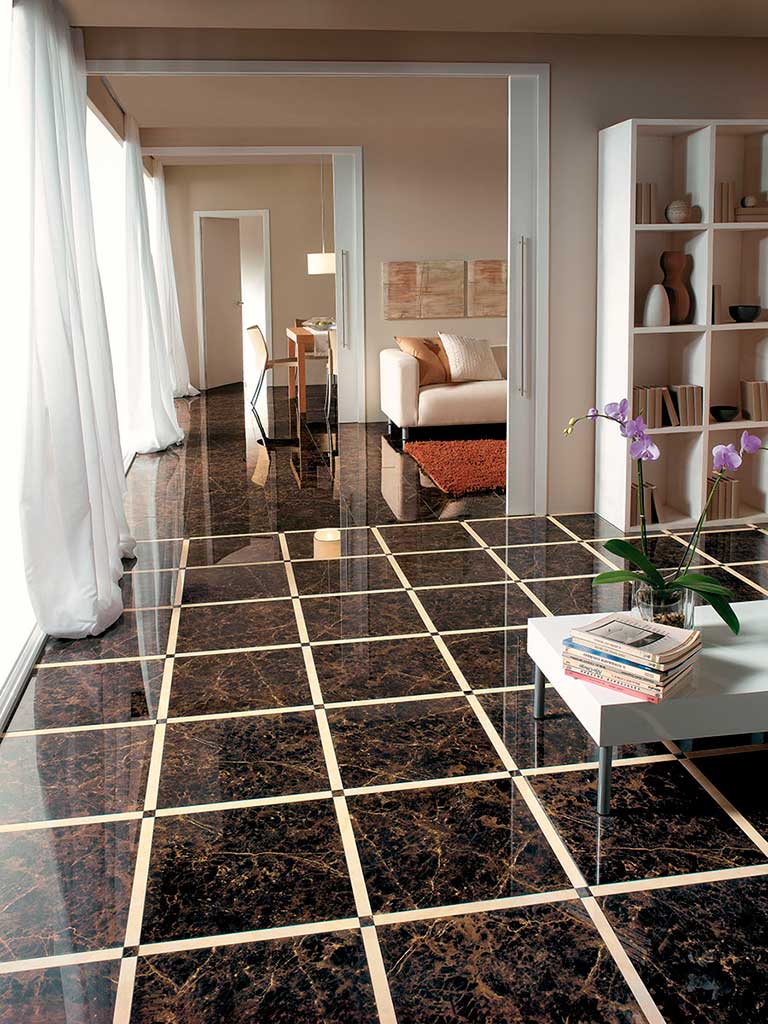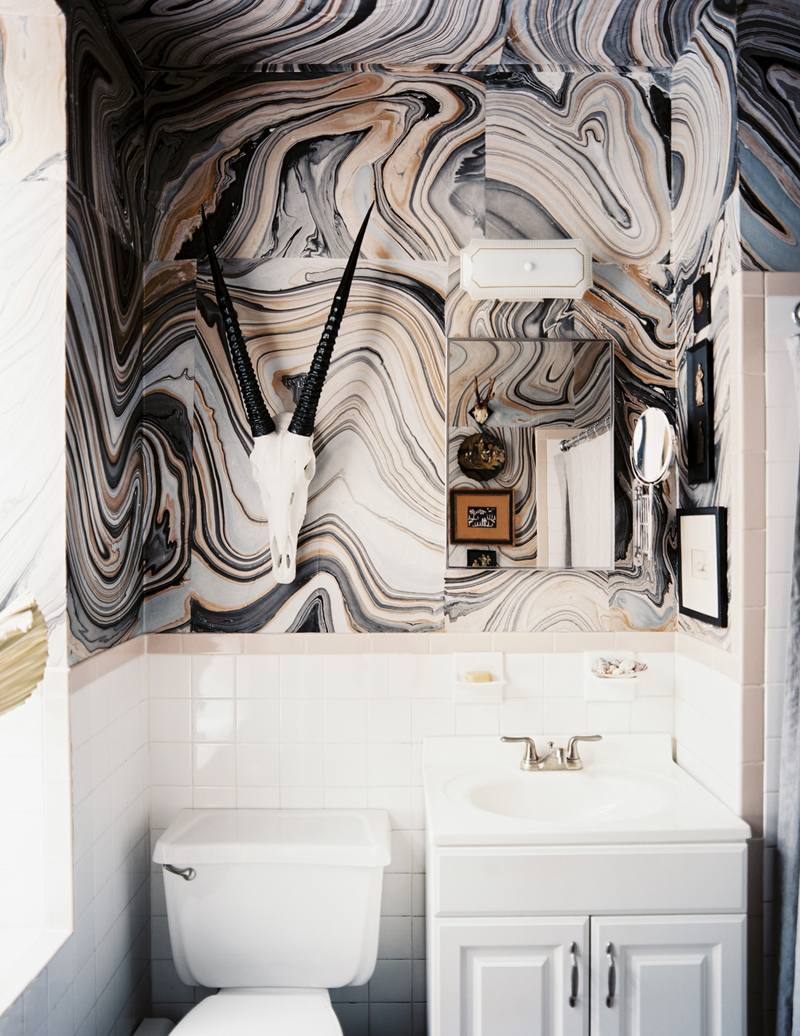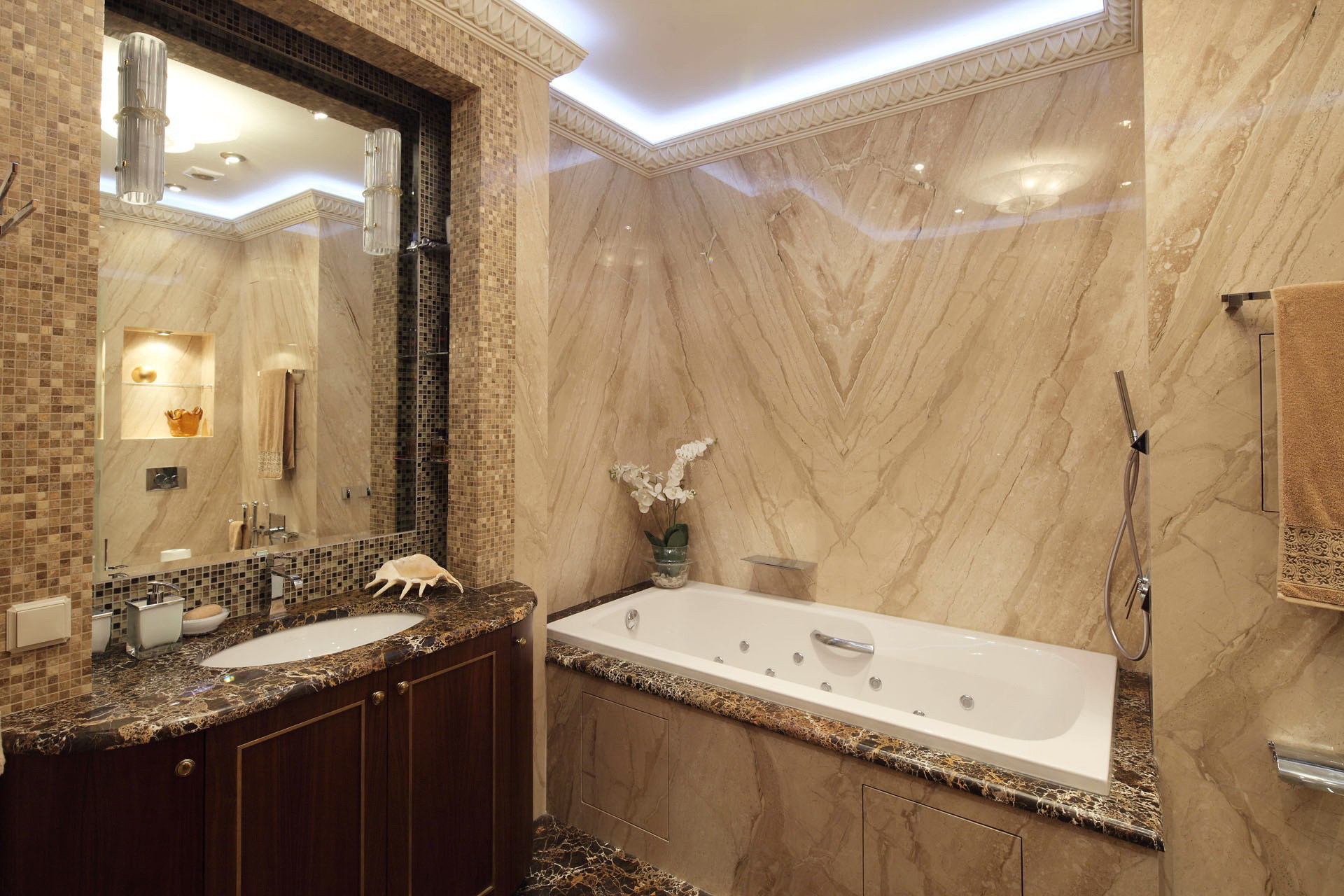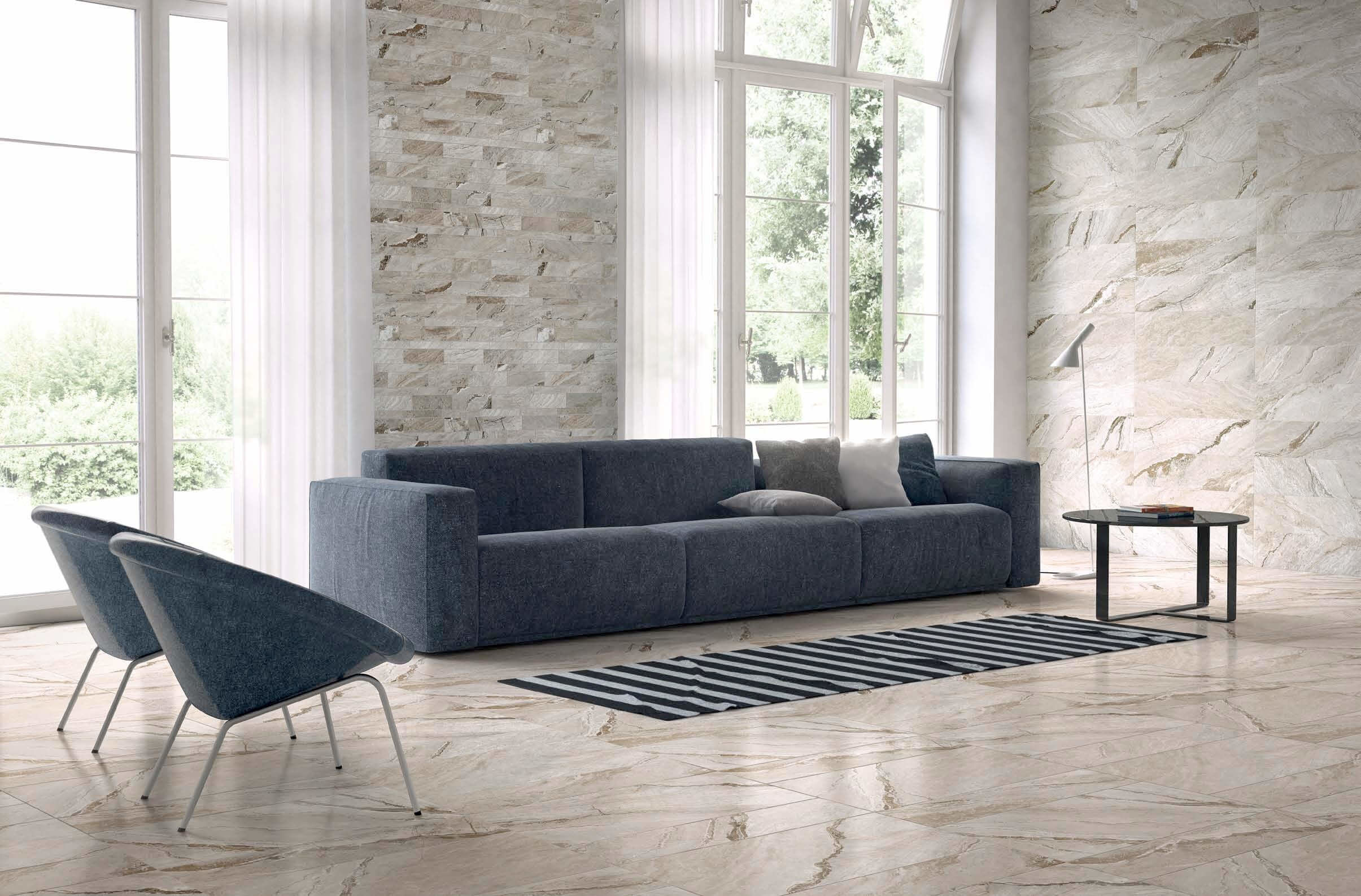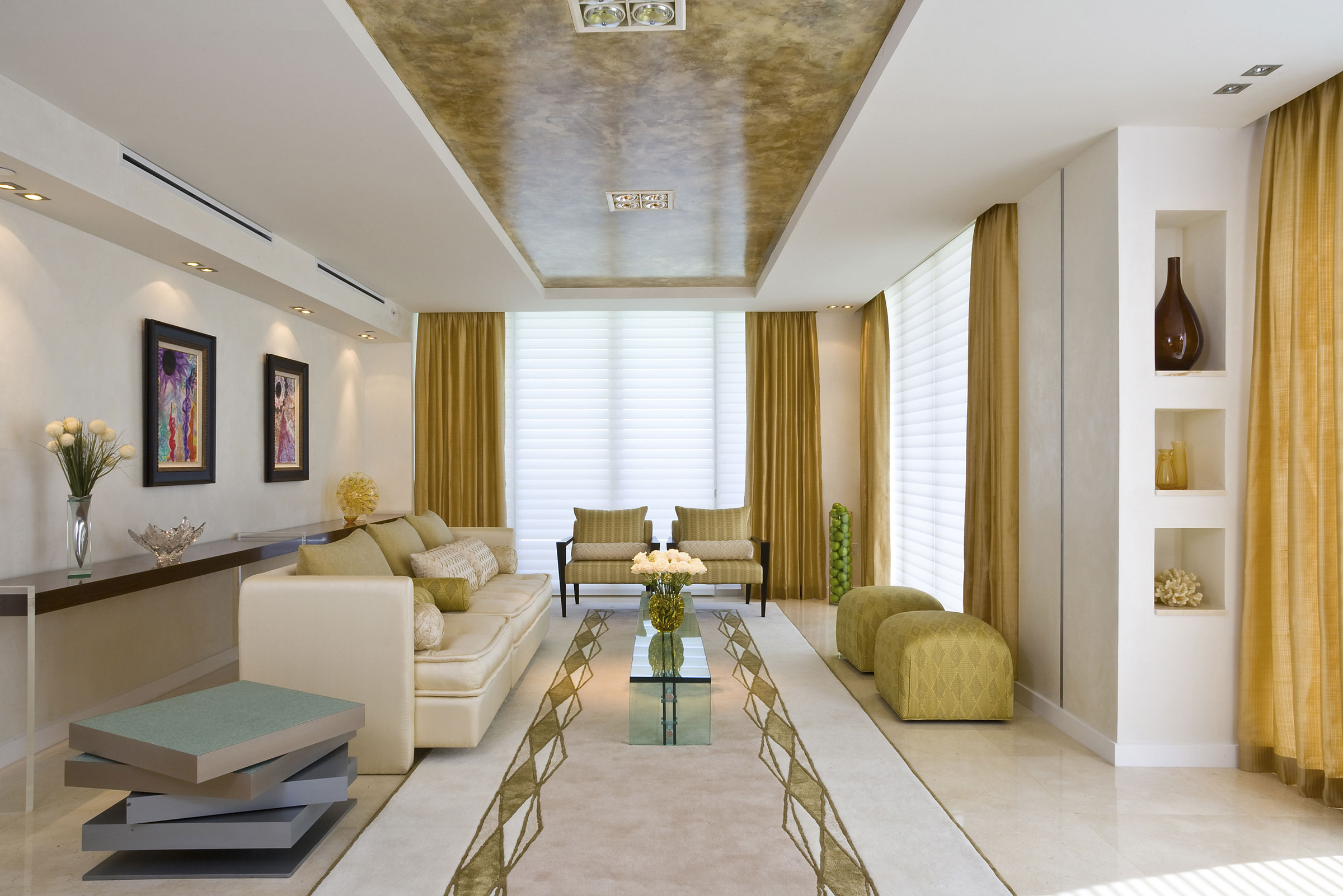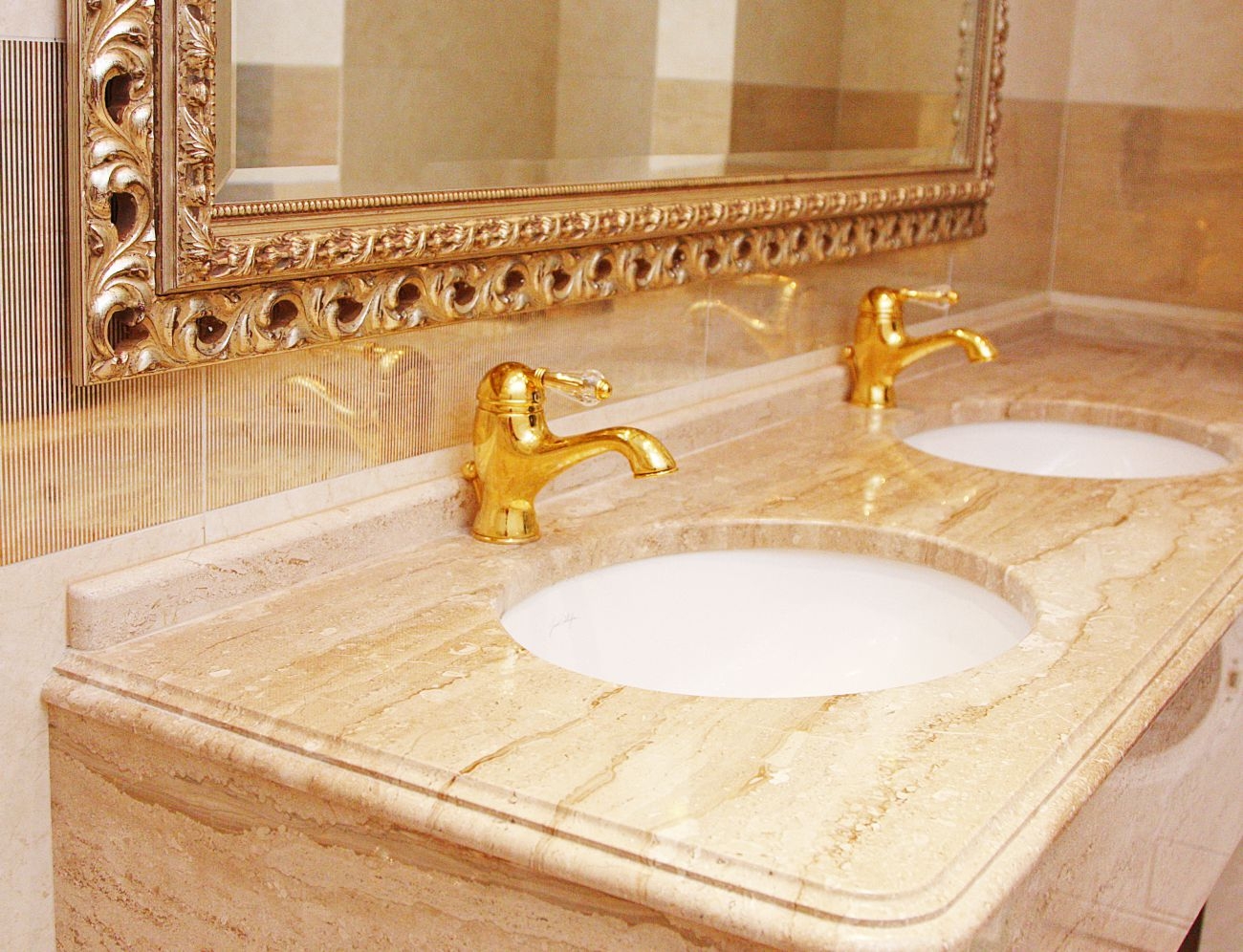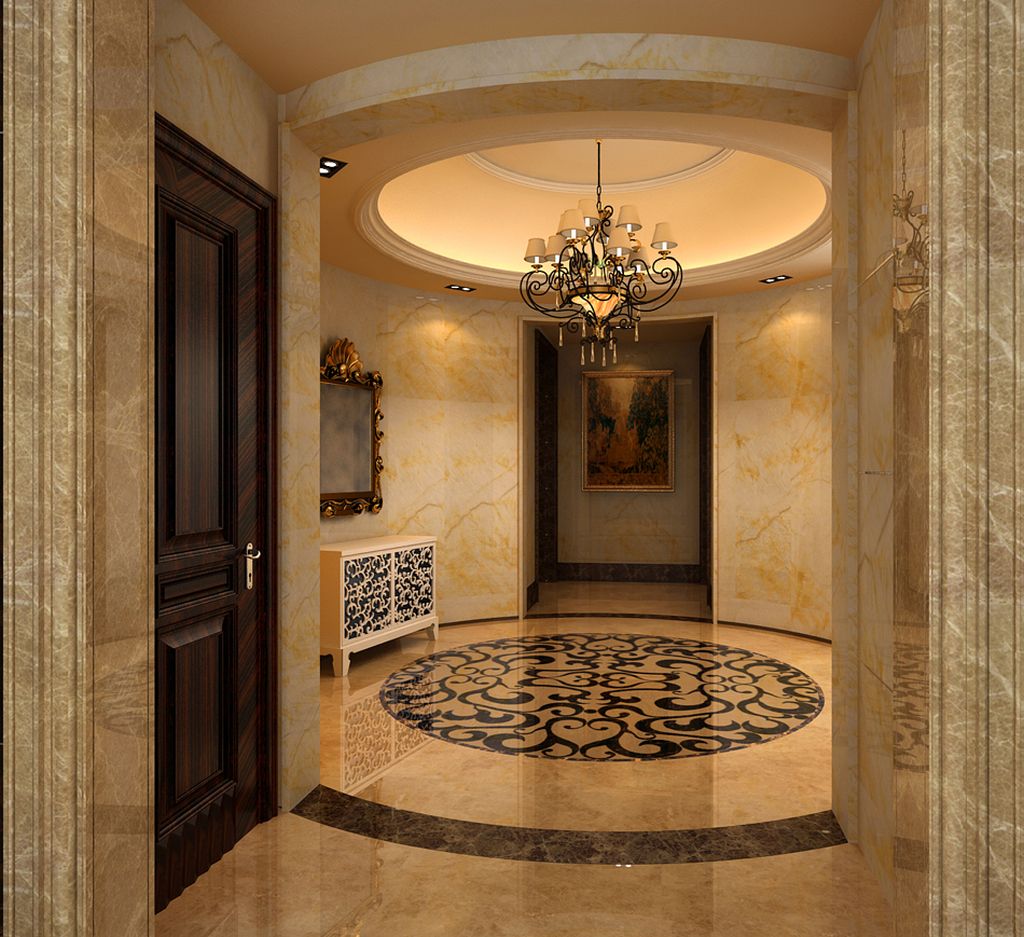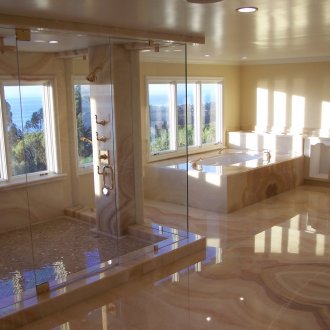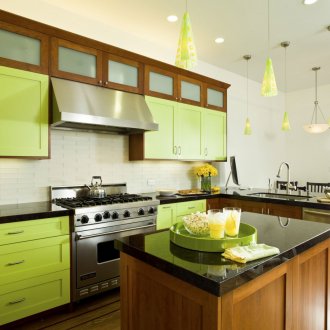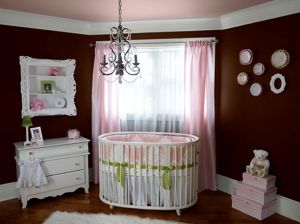Marble tile: design and purpose (44 photos)
Content
Marble is a classic material that gives the house sophistication, elegance and respectability. Its uniqueness lies in the ability to create a unified design concept, which includes the exterior and interior decoration of the building, the surrounding landscape and small architecture, but it is expensive and requires careful installation.
To make full use of the beauty and grace of marble allows artificially made tiles for this natural stone.
Varieties of Marble Tiles
Marble tiles have several classification types: according to the material of manufacture, functional purpose, color scheme.
According to the material of manufacture
The markets offer a wide assortment and nomenclature variety of marble tiles. The most common are ceramic, concrete, gypsum and polymer tiles.
The technology for manufacturing ceramic tiles is based on annealing at high temperature. They have high strength characteristics. Resistant to weathering, do not allow moisture, inert to the chemical environment. Do not create conditions for the formation of microorganisms, durable, resistant to abrasion.
When marble chips are added, the structure of the natural mineral is repeated. Easy to clean and wash; endowed with unique architectural, decoration and decorative properties. The design is distinguished by the high artistry of the composition, satisfying discerning tastes.
Concrete are actually composite materials. The basis is a cement-sand mixture. Advantages: environmentally friendly, have high resistance to open fire. They are 1.5 times stronger and 2.5 times more durable than natural products. Withstand extreme temperature drops (-50 0С - +60 0С).
They are made by the innovative method of vibration casting. The technology is complex and available to several companies in the world. Ingredients: refined sand, cement without additives, plasticizers with a mass fraction of 1-2% by weight of cement, pigments, dyes and water. On vibration tables, tiles are aged for a day. The resulting product resists heavy loads. The color scheme depends on the cement. White marble tiles are made from high grades of cement. Improper compliance with the proportions of the elements seriously affects the quality of the goods. In uncertified producers, it is often fragile.
Plaster consists of sand, feldspar, talc and gypsum, which plays the role of a connecting element. The mixture is fired and ground. Under natural stone, it is brought by polishing. Tile under white marble is obtained by adding humilax and technical alcohol to the mixture. Gypsum tiles have limitations in use, since they have high hygroscopicity. Typically used for decorating wall panels in dry rooms.
Polymeric are produced using the same technology as concrete tiles. The basis of the tiles is polymer concrete, in which thermoset phenolic, furan or epoxy resins are used instead of cement. Products are durable, reliable, lightweight, technologically advanced.
According to the functional purpose
Marble tiles are floor, wall and for outdoor use (low temperature).
Marble floor tiles have practically no restrictions on their use in an apartment or a private house.It gradually displaces linoleum and laminate.
The design of rooms under natural stone is distinguished by sophistication.
In the living room you can lay out a unique mosaic canvas from it, this is the advantage of artificial tiles over minerals. They are given a given pattern, color shade.
Living room or hall is the best room for the implementation of creative design ideas. There are no functional barriers in the form of a compulsory bed in the bedroom or a gas stove in the kitchen. Gypsum tiles are suitable here (there is no increased humidity), polymer material is also used, glossy tiles also look good.
Varying with shades allows you to visually change the volume of the room, reduce or enhance natural light, depending on the geographical orientation of the room. If necessary, the tiled floor can become the center of design of the entire apartment. The brownish range, in harmony with wooden furniture, looks especially advantageous.
Marble tiles for the bathroom and the bathroom become an indispensable attribute of the decoration of these objects. Ceramic and concrete tiles are suitable for them. They are moisture resistant and easy to clean. The color is matched to the color of the bathtub, sink and walls. Homeowners sometimes move away from the white shade. Black marble is popular. The bathroom is often decorated in brown, green tones.
Floor tiles should fit into the design of the bedroom. There is no need to apply bright colors. Matte tiles are more suitable for the purpose of the object. If you want to install a warm floor, the cable is laid under the tiles. All of them pass heat well.
Particular attention is paid to the tiles in the kitchen. It provides sterility. Vinegar, citric acid, sauces, spices spilled or dropped by negligence cannot harm the tiles due to their inertness to chemicals.
The strength properties of floor tiles allow them to be used on staircases. They are common in industry, medicine, pharmaceuticals, shopping and entertainment centers. For the floor, the most popular is the size of the tiles 60x60 cm.
Marble wall tiles remain the material that defines the design of the room. White glossy tiles are the best decoration, and a marble pattern gives the object a natural look.
Manufacturers strive to ensure that even ordinary tiles have special veins. Its texture should reproduce the mineral.
The use of other colors is aimed at wall tiles in the bathroom imitating endangered varieties of especially valuable green, red, black marble. In case of refusal to finish the bathroom with wall tiles, an apron behind the sink is made of it.
In bathrooms, matte wall tiles are used.
Marble wall tiles are rarely used in the living room and bedroom, but it is quite appropriate for window sills, fireplaces, countertops.
Marble wall tiles for the kitchen are just as necessary as in the bathroom. A glossy surface is also preferred here. If it is not possible to finish the walls with plates, then an apron is made behind the gas stove. Fire safety is associated with this. Tiles are not combustible: they do not emit toxic substances when heated. Tiles make it easy to wash off grease. An apron behind the sink or sink is desirable.
The design of rooms using floor and wall plates should meet the basic requirement: artificial marble and a large number of furniture are not compatible.
Marble tiles are also relevant for exterior decoration. In apartments, they are used to decorate balconies. In private homes, the scope of application is extensive: an apron for external washing, matte tiles on the facade of a house look very impressive, if an entrance staircase, portico, statues, small architecture are made of a similar product. Matte wall tiles are used to decorate individual sections of the walls.
Attractive floor and wall tiles in the summer kitchen.It also needs an apron over the gas stove or sink. The tiles should be matte. Gloss is very bright.
Marble tiles have other applications. Paving slabs or garden paths are made from it.
